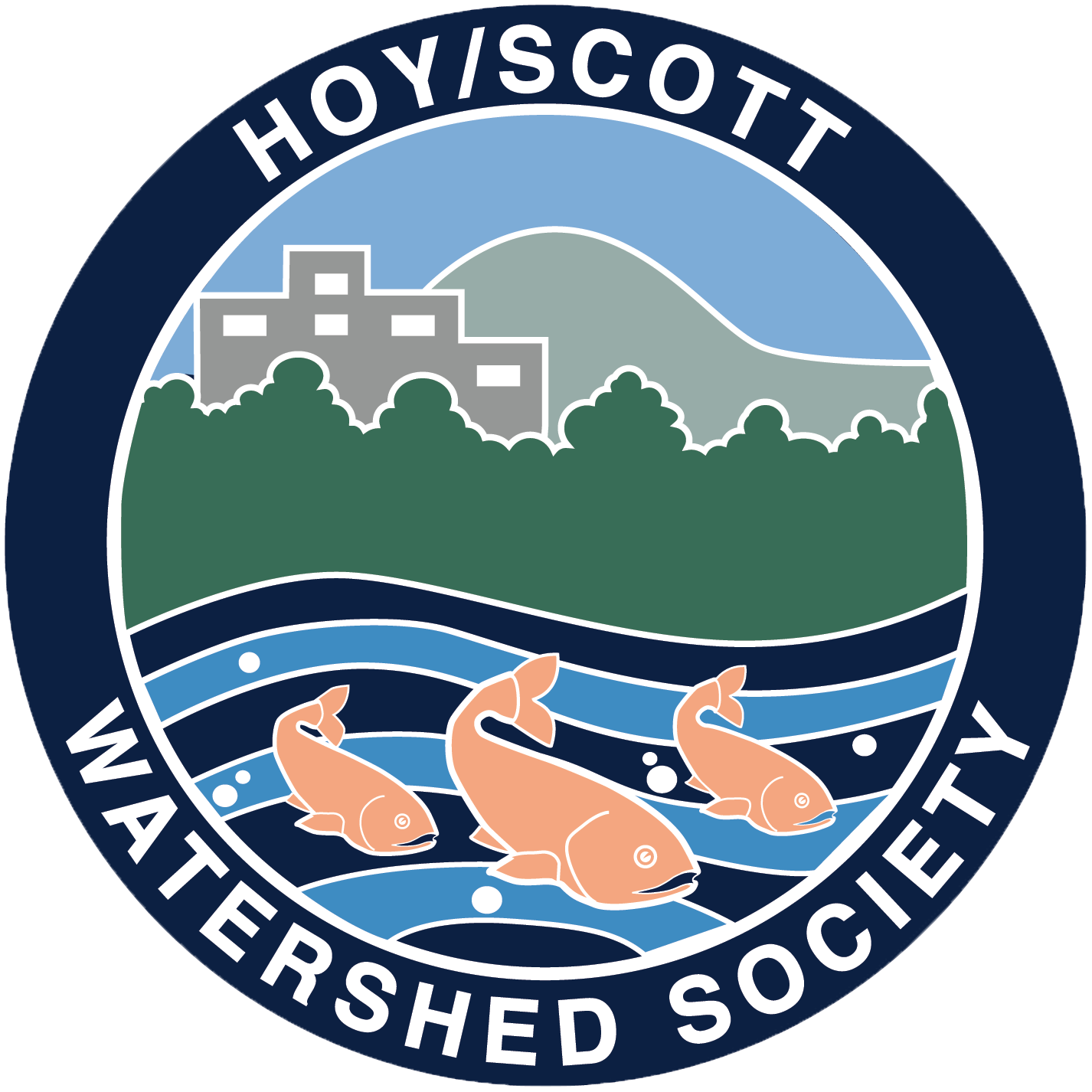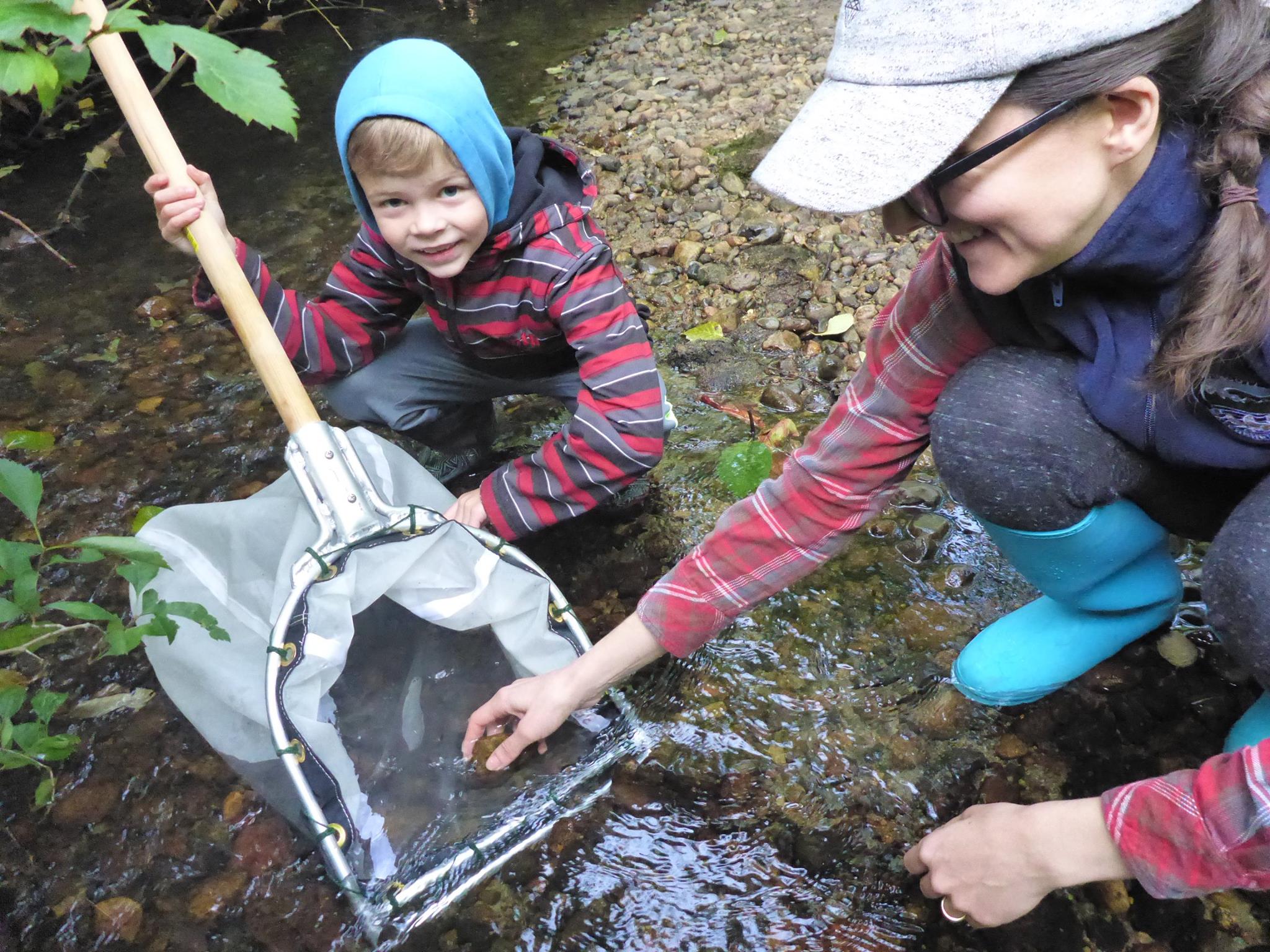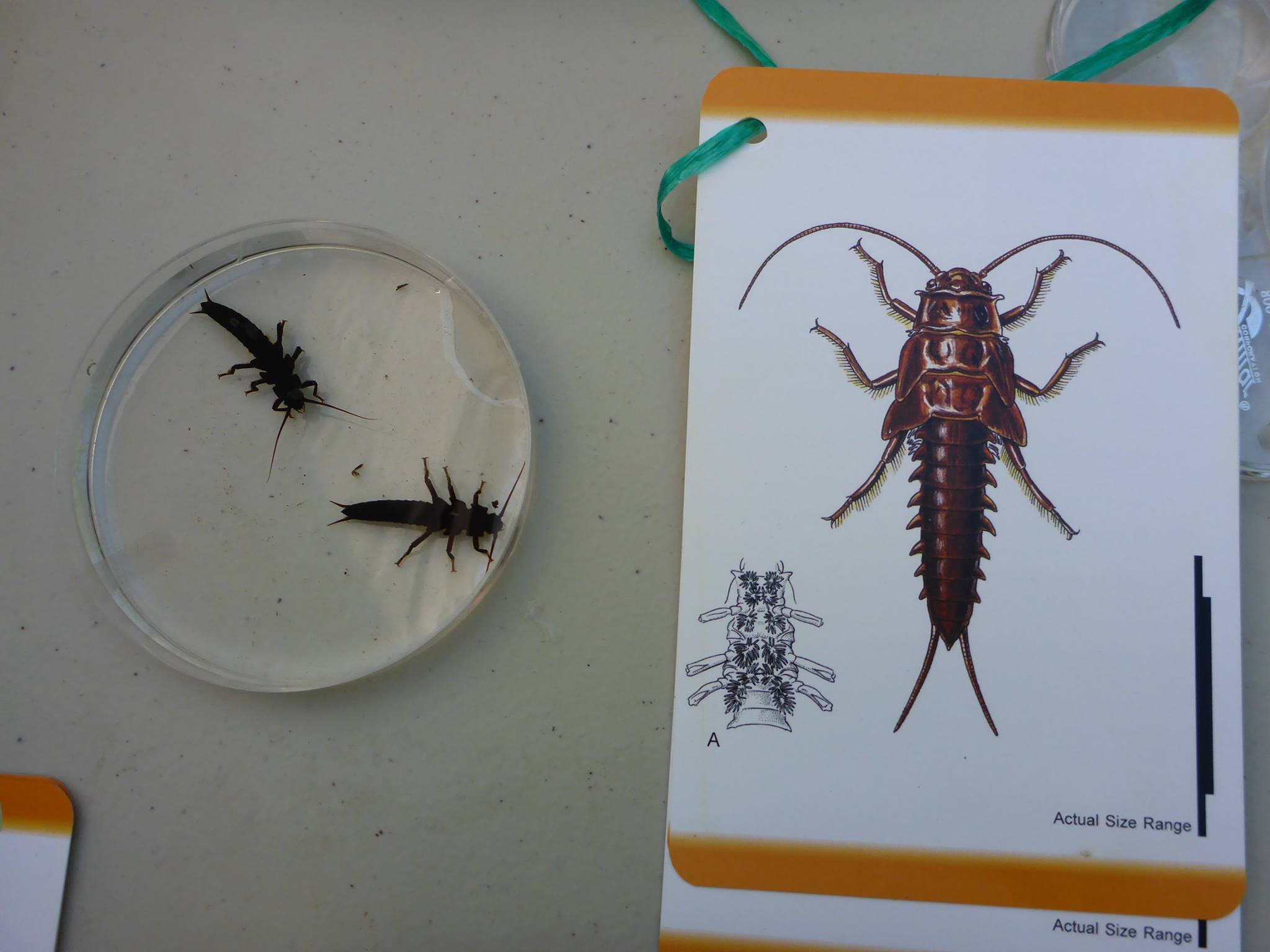Crayfish catch! All found in the bottom of the rearing pond. (Photo: HSWS)
Hoy/Scott Watershed Society conducted the annual rearing pond salvage on May 24.
Coho smolts were released on May 14. The water drained from the pond leaves lots of discoveries for invertebrates and crustaceans like crayfish, stoneflies and lamprey for discovery. One salmon smolt, as well as about a dozen fry, were also found. All were released into the stream.
Floorboards over the pond were first removed. After the salvage, the City of Coquitlam arranges for the pond mud and sediment to be removed via McCrae's Environmental Services (a vacuum truck), and then the pond will be pressure washed by the Society, floorboards returned, and then the creek water is reintroduced.
Later this month, the rearing pond will then be ready for the next coho brood to be transferred from the hatchery to live there until May 2023.
(Photo: HSWS)
Tyler searching with flashlight. (Photo: HSWS)
(Photo: HSWS)




